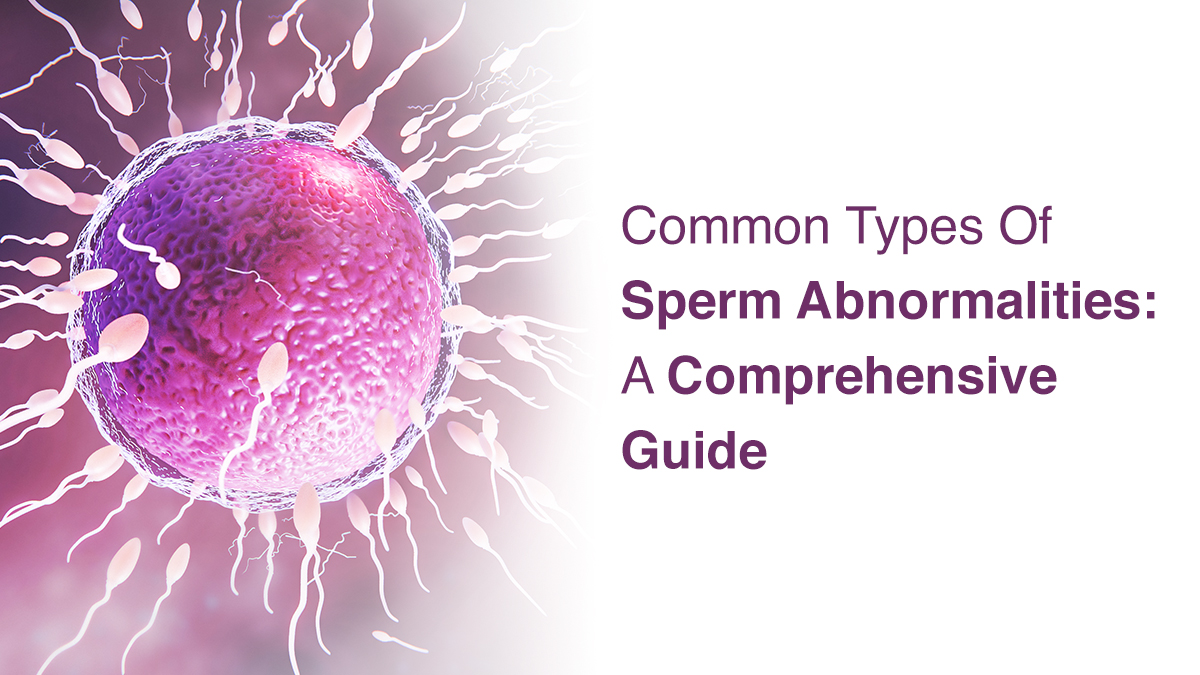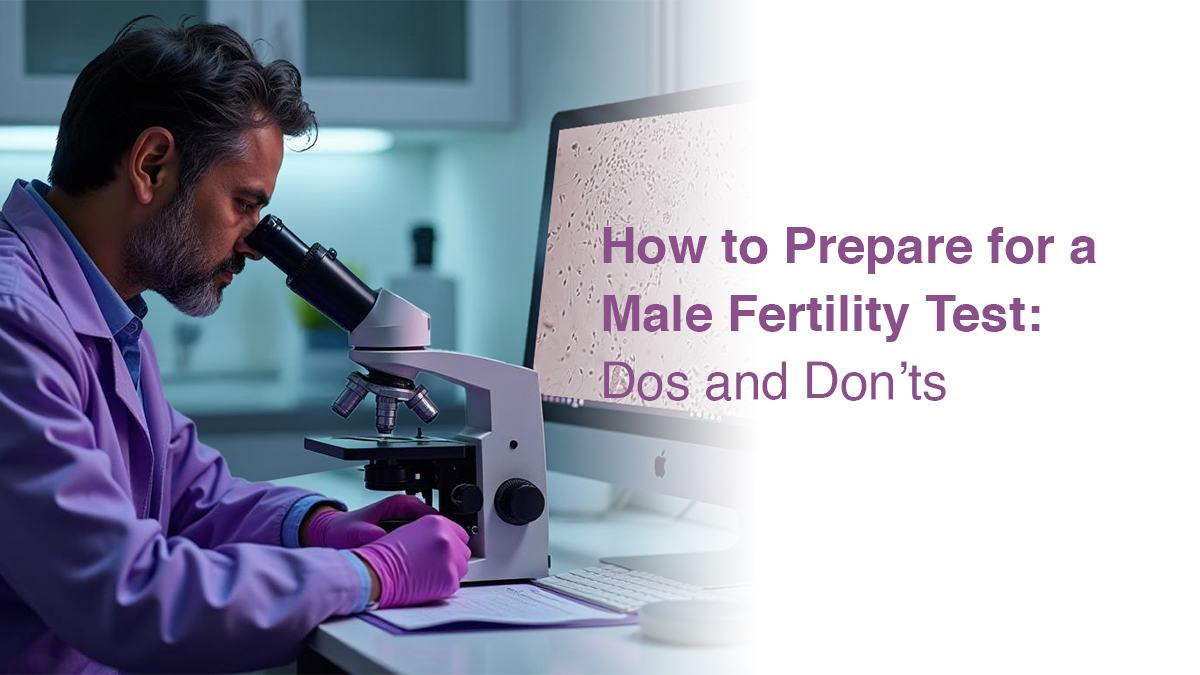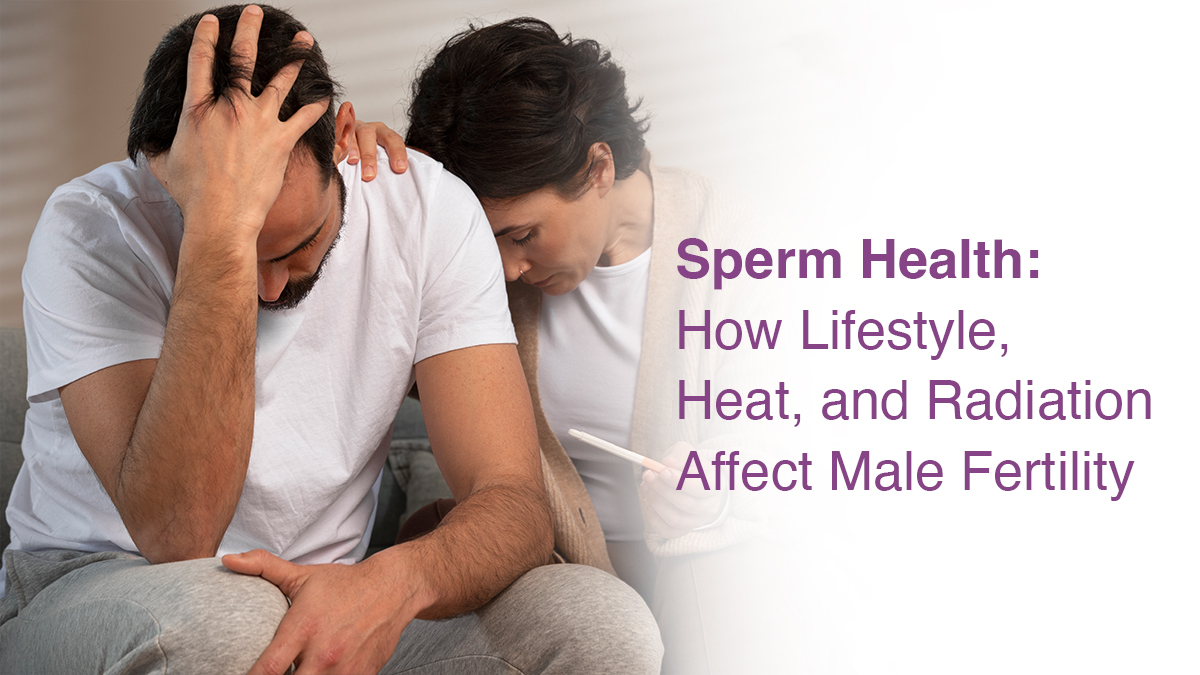
Common Types of Sperm Abnormalities: A Comprehensive Guide

Sperm is a vital component of a male’s reproductive system. It is a significant cell in charge of fertilising the female egg and starting the pregnancy process. Spermatogenesis is the process by which sperm cells are created in the testes. The testes’ immature cells divide and mature into mature, motile sperm cells that are capable of fertilising an egg during this process.
Numerous factors, including age, lifestyle choices, genetics, and underlying medical issues, can influence the quantity and quality of sperm. Sperm abnormalities can hinder a couple’s ability to conceive naturally and lower the likelihood of successful fertilisation. This does not imply, however, that a male with an abnormal sperm cannot become a father; certain cutting-edge methods and therapies help in becoming a parent.
What are Sperm Abnormalities?
Sperm abnormalities refer to any anomalies in sperm that may impact fertility. These concerns could be related to sperm motility (movement), morphology (shape), or count. These anomalies may decrease the likelihood of conception by making it more difficult for sperm to fertilise an egg. Genetics, hormone abnormalities, infections, lifestyle decisions (such as drinking or smoking), and environmental factors are some possible causes. A semen analysis is usually used to make the diagnosis and to increase fertility; treatment options may include medication, lifestyle modifications, or assisted reproductive technologies like IUI or IVF.
Types of Sperm Abnormalities
Different types of abnormalities in sperm are identified and diagnosed during a semen analysis. Here are some of the most common ones:
A. Oligospermia (Low Sperm Count)
A male with oligospermia has less than 15 million sperm per millimetre of semen. Hormonal abnormalities, varicocele, infections, and lifestyle choices, including smoking, are among the causes. A low sperm count decreases the likelihood of fertilising an egg, which can make conception more challenging and, in certain situations, necessitate fertility medications.
B. Asthenozoospermia (Poor Sperm Motility)
Asthenozoospermia is characterized by reduced sperm motility, or the inability of sperm to swim effectively to reach the egg. Toxin exposure, diseases, and hereditary factors are some of the causes. Infertility is greatly impacted by poor motility, which prevents sperm from fertilising an egg and frequently necessitates the use of assisted reproductive technologies such as IUI or IVF.
C. Teratozoospermia (Abnormal Sperm Shape)
Teratozoospermia is a condition wherein the sperm has an abnormal shape, which may affect fertilisation. Environmental pollutants, diseases, and hereditary factors are some of the causes. Sperm with abnormal shapes have a harder time penetrating the egg, which lowers fertility. Advanced procedures like IVF with ICSI, which involves injecting a single sperm straight into an egg, may be necessary in severe circumstances.
Other Less Common Sperm Abnormalities
Let’s take a look at some of the types of sperm abnormalities that are not well known. They are:
A. Azoospermia (No Sperm Count)
Azoospermia does not have sperm in the semen. Genetic disorders, hormone imbalances, or obstructions in the reproductive system are some of the causes of azoospermia. Since there is no sperm available for fertilisation, it has a major effect on fertility. Assisted reproductive methods such as IVF with sperm donation or surgical sperm retrieval are available as treatment alternatives.
B. Necrozoospermia (Dead Sperm Cells)
Necrozoospermia occurs when the sperm cells in the semen are either dead or immobile. It could be brought on by lifestyle choices, infections, or elevated scrotal temperatures. Since dead sperm cannot fertilise an egg, this condition may lower fertility. Improving sperm health or using assisted reproductive technologies like ICSI are possible treatments.
C. Oligoasthenoteratozoospermia (OAT)
OAT is an amalgamation of oligospermia (low sperm count), asthenozoospermia (poor motility), and teratozoospermia (abnormal sperm shape). Varicocele, infections, and hereditary factors are among the causes. Since OAT lowers the likelihood that sperm will reach and fertilise the egg, it has a major effect on fertility. Medication, advanced reproductive technologies like IVF, or lifestyle modifications may all be part of the treatment.
Diagnosis of Sperm Abnormalities
The first step in diagnosing sperm abnormalities is usually a semen analysis, which assesses sperm count, motility, morphology, and total semen volume. Scrotal ultrasounds to identify structural problems or blockages, genetic testing for inherited disorders, and hormonal evaluations to look for underlying hormonal imbalances are examples of additional procedures. Semen cultures may be carried out in situations involving infection or inflammation. These tests aid in determining the reason behind the anomalies and direct suitable reproductive treatment choices.
Treatment Options for Sperm Abnormalities
The available treatment options for sperm abnormalities depend on the particular problem you have. Enhance sperm health by making lifestyle modifications such as giving up smoking, drinking less alcohol, and controlling stress. Drugs may be used to treat infections or hormone abnormalities. Blockages or varicoceles can be repaired surgically. Assisted reproductive methods such as IUI, IVF, or ICSI (intracytoplasmic sperm injection) are frequently employed for severe defects. To get pregnant in azoospermia situations, donated sperm or surgical sperm retrieval may be an option.
Preventing Sperm Abnormalities
Maintaining a healthy lifestyle is essential to preventing sperm abnormalities. Steer clear of smoking, binge drinking, and recreational drugs as they can harm sperm health. Eat a healthy, well-balanced diet full of vitamins, minerals, and antioxidants. Maintaining a healthy weight, managing stress, and engaging in regular exercise can help in improving sperm quality. Avoid hot tubs, tight clothing, and extended laptop use to protect the testes from extreme heat. Preventing sperm abnormalities can also be aided by routine checkups and the management of underlying medical disorders, such as diabetes or infections.
Conclusion
Although various types of sperm abnormalities can have a major influence on fertility, many men can increase their chances of getting pregnant with early detection and the right care. The key to preventing and managing sperm-related problems is leading a healthy lifestyle and getting medical help when necessary. Visit the Oasis Fertility Clinic near you to engage with our fertility specialists in an in-depth discussion to understand how to improve sperm motility, count, as well as look for treatment options best suited to you. Get more information by contacting us on 1800-3001-1000 or using the live chat facility.


fill up the form to get a
Free Consultation
Avail 0% interest on EMI
All Procedures | No Upper Limit






